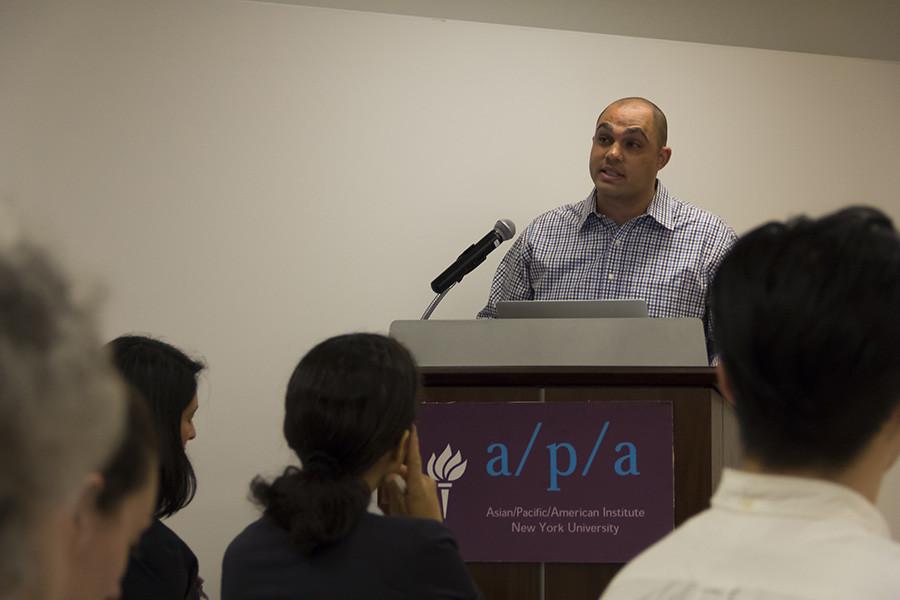A new mixed-raced generation is transforming the city: Will Toronto be the world’s first post-racial metropolis?
Toronto Life
2013-02-12
Nicholas Hune-Brown, Author
Kourosh Keshiri, Photography
Interviews by Jasmine Budak
I used to be the only biracial kid in the room. Now, my exponentially expanding cohort promises a future where everyone is mixed.
Last fall, I was in Amsterdam with my parents and sister on a family trip, our first in more than a decade. Because travelling with your family as an adult can be taxing on everyone involved, we had agreed we would split up in galleries, culturally enrich ourselves independently, and then reconvene later to resume fighting about how to read the map. I was in a dimly lit hall looking at a painting of yet another apple-cheeked peasant when my younger sister, Julia, tugged at my sleeve. “Mixie,” she whispered, gesturing down the hall.
“Mixie” is a sibling word, a term my sister and I adopted to describe people like ourselves—those indeterminately ethnic people whom, if you have an expert eye and a particular interest in these things, you can spot from across a crowded room. We used the word because as kids we didn’t know another one. By high school, it was a badge of honour, a term we would insist on when asked the unavoidable “Where are you from?” question that every mixed-race person is subjected to the moment a conversation with a new acquaintance reaches the very minimum level of familiarity. For the record, my current answer, at 30 years old, is: “My mom’s Chinese, but born in Canada, and my dad’s a white guy from England.” If I’m peeved for some reason—if the question comes too early or with too much “I have to ask” eagerness—the answer is “Toronto” followed by a dull stare…
…For today’s mixies, growing up multiracial has meant inner debates about which parent to identify with, how to explain one’s background, and coping with the urge to blend in. Rema Tavares, a half-Jamaican 30-year-old with curly hair and light brown skin, says her looks have provoked strange responses in people. “I’ve had someone say to me, ‘Don’t say you’re black because you don’t have to be. You can get away with it!’ ” She was raised in a small town outside Ottawa and gradually moved to bigger and bigger cities. “I hated being the only person of colour on the bus in my hometown,” she told me. Another mixed-race woman, Alia Ziesman, grew up in Oakville and was so ashamed of her mother, an ethnically Indian woman from Trinidad, that she refused to walk on the same side of the street as her. Ziesman and Tavares and everyone else I spoke to agree that it is a pleasure to be in a city like Toronto today—a place where you’re guaranteed not to be the only coloured face on a city bus…
…Minelle Mahtani, a U of T associate professor, is one of the pre-eminent Canadian authorities in the field, and has just written a book on multiraciality in Canada. Mahtani has long, dark hair, a toothy smile and a collection of features that are impossible to place on a map. When she was growing up in Thornhill, people would guess at her background without ever hitting on the actual mix, Iranian and Indian. “As a kid, I was one of the few minorities in my neighbourhood, and there was pressure to acclimatize to whiteness” she says. When I met her in a café near U of T in December, she had recently come back from the second Critical Mixed Race Studies Conference at DePaul University in Chicago, a four-day exploration of race and racial boundaries that also acts as a place for mixed-race academics from across North America to hang out and share nerdy in-jokes about the successful 1967 challenge to Virginia’s anti-miscegenation laws…
…The reality of being mixed is far more complicated. The Pew study didn’t reveal a world where skin colour is irrelevant: a newlywed Hispanic-white couple will earn more than the average Hispanic couple, yes, but less than the average white couple. The same is true of black-white pairings. What’s also clear is that mixing doesn’t happen evenly. The success of Asian-white couples like my parents can be attributed to a number of things, but the fact that immigration laws often hand-pick the wealthiest, most educated, most outward-looking Asians is surely part of it. It’s easy to imagine a future in which upwardly mobile Asians and whites mix more frequently, while other minorities are left out of a trendy mixed-race future. Marriage across racial lines is increasingly possible, but mixing across class has always been tricky. And class, it goes without saying, remains stubbornly tied to skin colour…
Read the entire article here. View the photo-essay here.



